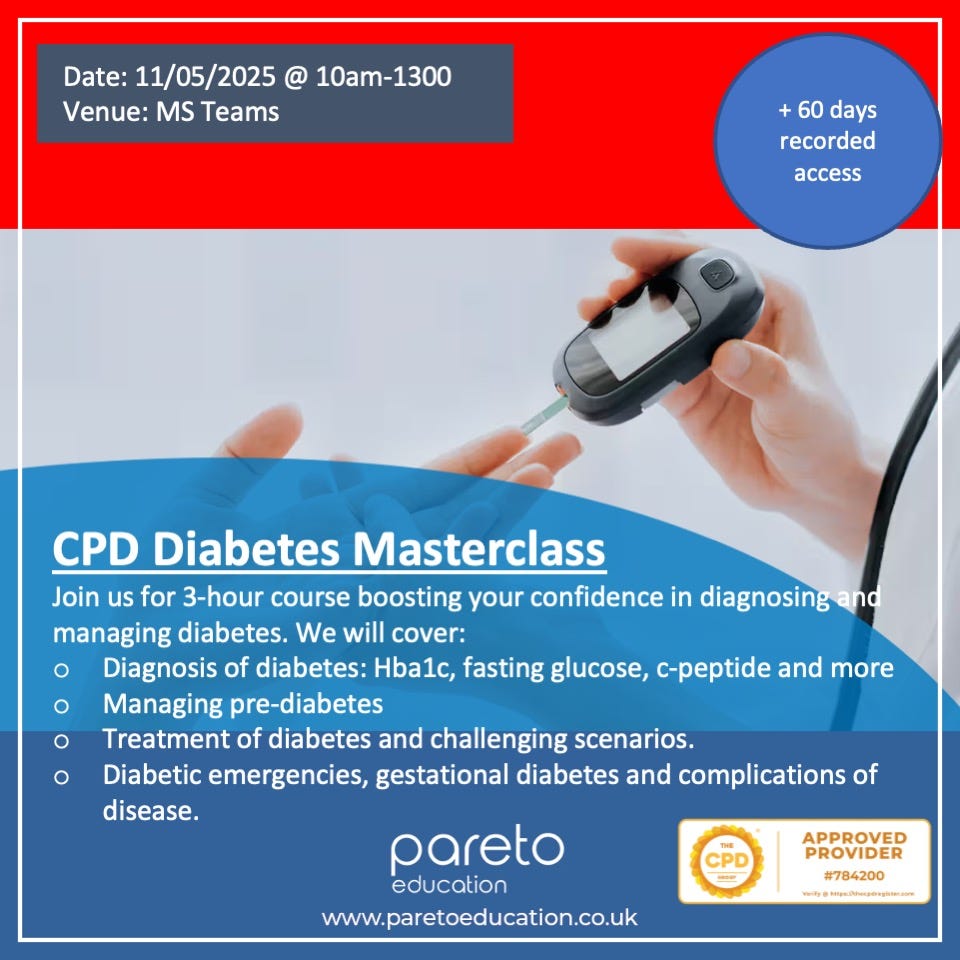"Plan: A&G Dermatology - images attached"
"Dear xxxx, please could you send the following letter as an A&G to renal"
Sound familiar? I must say, Advice and Guidance (A&G) has been one of the most useful tools in primary care. It first started around 2006, at a time when technology was really beginning to boom. It began as a local pilot, specifically in dermatology, and was found to be effective in helping primary care clinicians make decisions around complicated clinical scenarios.
Between 2015 and 2017, A&G was expanded across a number of specialties, including rheumatology, haematology, and paediatrics. Hospital consultants were expected to dedicate time to answering queries and providing advice. This expansion was part of a wider technological shift known as the Elective Care Transformation Programme.
It was during the COVID-19 pandemic that NHS leaders truly realised how effective A&G could be. Early statistics from 2019 showed that it reduced primary care referrals by up to a third. The NHS then decided to integrate A&G into the Electronic Referral Service (e-RS), allowing consultants to provide advice instead of automatically arranging a face-to-face clinic appointment.
And that brings us to today.
More A&G = Less Referrals
Recently, the NHS announced a payment of £20 per A&G request. The assumption driving this initiative is that it will reduce the referral rate to hospitals. There is a lot of evidence supporting this, as A&G has been shown to reduce referral rates by 30–60% (Elective Care High Impact Interventions report, 2018).
The effectiveness varies by specialty, with significant reductions seen in areas such as dermatology, cardiology, and musculoskeletal (MSK) services, but it has been less effective in specialties such as urology.
The NHS has set aside £80 million for this initiative, which is a substantial amount of funding. The feeling in primary care is generally positive, but there are some long-standing problems with A&G that both primary and secondary care clinicians have raised. Here are a few:
When a clinician refers a patient to secondary care, there are usually set pathways and criteria for referral. These range from two-week-wait referrals to routine outpatient referrals, as outlined by NICE. With A&G, however, the floodgates can open to a wide range of queries. I have noticed this myself, where the reply to my A&G request is sometimes just a copy-and-paste of routine NICE guidance. This feels like a poor use of time.
Lack of system integration - Until last year, secondary care clinicians were unable to view the primary care record of a patient. Thankfully, this has changed for me, but it continues to be the case in many areas. Additionally, funding for different software platforms is constantly changing. For example, our practice uses Accurx to correspond with patients and to send A&G requests. Funding for this has now stopped, and the alternative system does not have an A&G function.
Such changes in funding and the lack of software integration can make A&G an incredibly inefficient process.
Accountability - always a huge topic. For the person on the other side — in this case, a hospital consultant — they are being asked to give advice on a patient they have not seen, assessed, and, in some areas, for whom they do not have access to the primary care record. As it stands, the GP, ACP, or PA requesting the A&G remains responsible for any management plan. Therefore, primary care clinicians need to provide as much detail as possible to inform the clinician on the other side.
Time - This is an issue on both sides. For primary care clinicians, there is no time set aside for A&G referrals. In addition, any advice that comes back will need to be actioned. This could involve arranging blood tests, scans, or patient conversations, all of which need to be done outside of core clinic hours.
On the flip side, as some specialties have yet to adapt to the new A&G landscape, consultant contracts do not reflect this. In some areas, consultants are required to answer queries between cases or between clinics. The risk of clinician burnout is real.
Cost - Surely this is no longer an issue if GP surgeries are being paid £20 per referral? In reality, however, this might not be enough. Don’t forget, the burden of investigating and treating patients according to secondary care advice falls on primary care. This means the cost of blood tests, scans, and prescriptions falls on the practice, potentially eating up the entirety of the £20.
This is an interesting space to watch. The data is good but as I said, the floodgates will be open to all sorts of queries. Here are some quick tips on how we can help.
Provide sufficient details and background on the patient.
Summarise recent test/scan results or any treatment given
Clearly define your clinical question and set your expectations. Are you asking for the next steps in investigation or treatment or are you querying a referral?
Have you had any interesting A&G responses? Be sure to share them with us!
Join us on our FREE Allergies Webinar and CPD Diabetes Masterclass
We have some brilliant events coming up over the next few weeks. With spring in full swing, we thought we’d make our next webinar on allergies to provide clinicians with an update on how to diagnosis and treat allergic conditions.
Join us on Thursday 1st May at 7:00pm for this FREE webinar. You will also receive the slide pack as well as a self-CPD certificate. You can sign up here.
There are approximately 5.6 million patients living with diabetes in the UK. This is increasingly rapidly. Additionally there are 6.3 million people with pre-diabetes. All of this costs the NHS approximately £14 billion, £6 million of which is used to prevent complications.
For clinicians, diabetes is one of the hardest diseases to manage. It’s full of treatment targets, anti-diabetic medications, injectable treatment and monitoring requirements for preventable complications.
Our CPD Dermatology Masterclass seeks to make this easier.
Delivered by Dr Mohammed Oomerjee (GP + A&E), this masterclass aims to situate the diagnosis of diabetes, pre diabetes and treatment by presenting up to date guidance with clinical cases. This course will be run LIVE (11.05.2025) and will also be RECORDED for future access.
This course will be CPD accredited and will be a useful addition to your portfolio to prove your confidence in managing clinical scenarios in diabetes. You can sign up here.
How To Give EFFECTIVE Feedback
Feedback is really important, whether you’re receiving it or giving it. There are lots of models detailing how feedback should be given and having been supervisors for clinicians for a number of years, we’ve bought our insights together in this FREE video. Have watch and don’t forget to like, subscribe and share!
Website: www.paretoeducation.co.uk
Instagram: www.instagram.com/pareto_ed
Twitter: www.twitter.com/pareto_ed
Youtube: https://bit.ly/3DPm23c
Email: info@paretoeducation.co.uk






